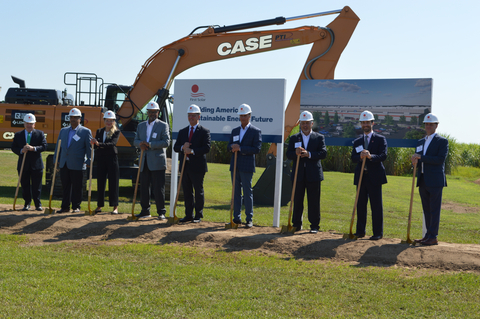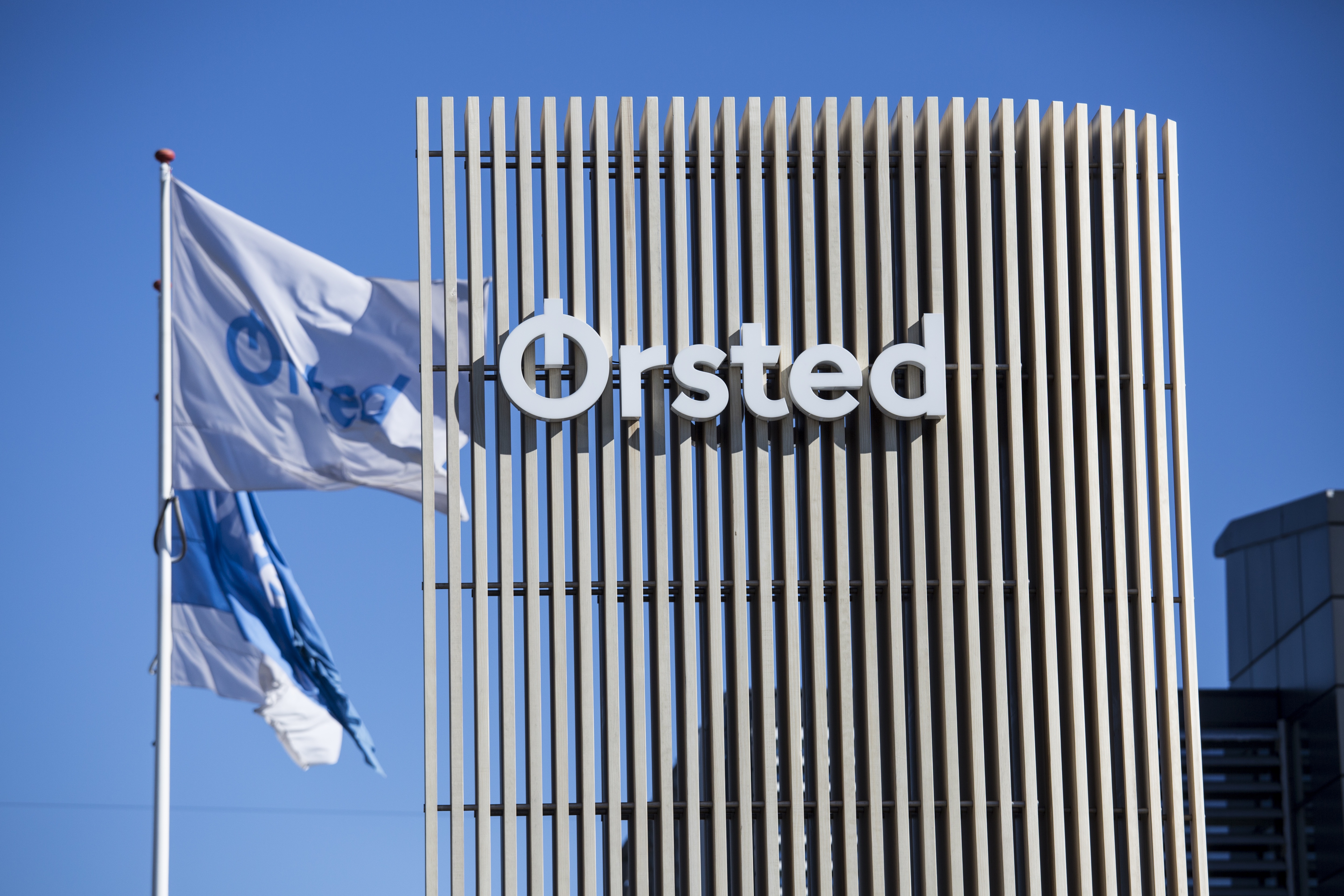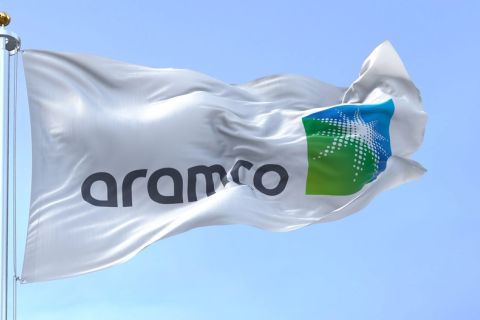Arizona-based First Solar has broken ground on its $1.1 billion solar panel manufacturing facility in Louisiana’s Iberia Parish, the company said Sept. 21, as it aims to boost the number of photovoltaic solar panels amid the transition to cleaner energy.
“When completed, the fully vertically integrated manufacturing facility will cover over two million square feet and is designed to transform a sheet of glass into a ready-to-ship Series 7 module in approximately 4.5 hr, producing over one dozen new Louisiana-made solar panels every minute,” First Solar said in a news release.
Plans are for the facility, which has a 3.5-gigawatt (GW) manufacturing capacity, to begin commercial shipments by the first of half 2026. It will be First Solar’s fifth vertically integrated factory in the U.S., moving the company to its U.S. manufacturing capacity target of 14 GW and 25 GW globally in 2026.

“This facility, like its sister facilities in Ohio and Alabama, represents First Solar’s investment in our country’s future,” First Solar CEO Mark Widmar said. “We are creating enduring value for the U.S. by building a robust solar manufacturing base and the value chains that enable it.
The expansion projects come as federal incentives, specifically those in the Inflation Reduction Act, encourage manufacturers to produce more solar panels domestically—instead of relying heavily on China—to help push the U.S. toward its net-zero goals. Incentives include an advanced manufacturing production tax credit that can be applied to the domestic production of solar components such as modules, photovoltaic cells and wafers and solar-grade polysilicon, among other items.
Earlier this year, First Solar reported it had sold out of planned production through 2025.
Here is a look at other renewable energy news.
RELATED
PwC Talks Returns, Energy’s ‘Sleeper Candidate’ and ‘Dividend Aristocrats’
Energy Transition Demands Like Asking ‘Homeless to Diet,’ Global E&Ps Say
Exxon CEO Darren Woods: Overnight Energy Transition ‘Wishful Thinking’
Biofuels
Strategic Biofuels Secures Air Permit for Green Fuels Plant in Louisiana
Developer Strategic Biofuels has received an air permit from the Louisiana Department of Environmental Quality (DEQ) for the biomass waste-to-fuels project it is developing, the company said Sept. 21.
Located at the Port of Columbia in Louisiana’s Caldwell Parish, the Louisiana Green Fuels project is designed to produce renewable diesel with “deeply negative” carbon emissions, the company said. The project, a first for Strategic Biofuels, features a biorefinery converting forestry waste to renewable fuel; a biomass-fired green energy power plant for the facility; and a carbon sequestration complex to permanently store the CO2 captured from both, a news release said.
Hatch serves as the project’s engineer and Eagle Environmental Services is the project’s environmental consultant.
Receipt of the permit means Louisiana has determined the project will not adversely impact local air resources.
“Securing the air permit for the integrated facility is a significant development for our project,” said Paul Oesterreich, senior vice president of project development for Strategic Biofuels. “The permit application for our facility is the first of its kind in Louisiana to be reviewed by the DEQ.”
Strategic Biofuels said the U.S. Environmental Protection Agency has deemed its Class VI well permit application as “administratively complete.” In July, the company said it entered an agreement with SLB to provide carbon sequestration services for the project.
Energy Storage
Dominion Pursues Energy Storage Technology Pilot Project
Virginia-based Dominion Energy has proposed a pilot project that would test two new battery storage technologies that aim to increase discharge times to the grid, the utility firm said Sept. 19.
Located at the existing Darbytown Power Station in Henrico County, Virginia, the pilot project would test Form Energy’s iron-air batteries, which have the potential to discharge energy for up to 100 hr. Eos Energy Enterprises’ zinc-hybrid batteries, which use earth-abundant raw materials, will also be tested at the site.
Form’s batteries could discharge energy for multiple days compared to existing batteries which last for four hours or less, Dominion said. Eos’ technology relies on zinc, a battery material that is more abundant and less expensive than lithium.
The technologies could become an alternative to traditional lithium-ion batteries used today mostly for energy storage. Energy storage is seen as key to the growth of renewable energies such as wind and solar, allowing excess energy to be stored then released when needed.
“With longer-duration batteries in the mix, this project could be a transformational step forward, helping us safely discharge stored energy when it is needed most by our customers,” Ed Baine, president of Dominion Energy Virginia, said in a news release.
The utility company has applied to the Virginia State Corporation Commission for approval. The project also needs approval from Henrico County officials. If given green lights, construction would begin by late 2024 with operations starting by late 2026.
Sigma Lithium Signs Supply Deal with Glencore
Miner Sigma Lithium said on Sept. 21 it would supply more than 20,000 tonnes of lithium to commodity trader Glencore amid rising demand for the key element used in electric vehicle batteries.
The Vancouver-based miner said it would ship the 22,500 tonnes of lithium to Glencore from the Vitoria port in Brazil this week as part of a collaboration with the Swiss firm.
Sigma, which is exploring strategic alternatives, including a potential sale of the company, said it would receive half of the prepayment in advance of shipment at a 9% premium to the average price of the metal in China, Japan and South Korea.
The lithium would be sourced from Sigma’s Greentech lithium plant at its Grota do Cirilo Project in Brazil.
The company had started production at the Grota do Cirilo project earlier this year to supply roughly a fourth of its output to LG Energy Solution, with the rest slated for sale on the spot market.
Stora Enso, Others Invest $18MM in Bio-graphite Firm CarbonScape
Finnish-Swedish forestry firm Stora Enso, battery producer Amperex Technology Ltd. (ATL) and other parties have invested $18 million in start-up CarbonScape to commercialize bio-graphite for use in batteries, they said Sept. 19.
New Zealand-based CarbonScape patented a process to use forestry industry by-products such as wood chips to make graphite, which can account for up to half of the weight of lithium-ion batteries used in electric vehicles (EVs) and storage.
The investment will be used to further develop plans to build production facilities in Europe and the U.S., a statement said.
Currently graphite for the anodes of batteries are sourced from mined natural graphite or synthetic graphite produced from petroleum products.
CarbonScape says its bio-graphite has a carbon negative footprint, saving up to 30 metric tons of CO2 emissions per tonne of material compared to synthetic or mined graphite. The material can also be produced close to battery factories, helping to cut down on CO2 emissions compared to mined graphite transported from distant locations, the statement said.
By using less than 5% of forestry by-products generated each year in Europe and North America, CarbonScape said its process could produce enough bio-graphite to meet half the total global projected graphite demand for EV and grid-scale batteries by 2030.
CarbonScape has a pilot facility in Marlborough, New Zealand that produces bio-graphite for customer testing and validation, it said.
Hydrogen

PowerTap Enters LOI to Supply Hydrogen, CO2
PowerTap Hydrogen Fueling Corp. said Sept. 19 it has signed a non-binding letter of intent (LOI) with Coleman Industrial Gases LLC to negotiate and enter a CO2 and hydrogen purchase agreement.
As part of the agreement, PowerTap will sell food-grade CO2 and fueling-grade hydrogen to Coleman for its future fleet of fuel cell electric trucks (FCET). Power Tap will also deploy its hydrogen production, fueling and CO2 capture and storage equipment at several sites, according to a news release.
“Our pending partnership with Coleman is a testament to the power of collaboration in advancing clean energy solutions,” said PowerTap CEO Salim Rahemtulla. “Together, we are poised to make a positive impact on the environment while meeting the evolving needs of our customers.”
The companies are also considering integrating Coleman affiliate CMC Dry Ice Manufacturing LLC and PowerTap US refueling stations at a co-located distribution center to eliminate CO2 transport.
“In these cases, CMC will offer the dry ice produced to PowerTap FCET OEMs and fleet operators for cold transport of products such as vaccines and produce, further positioning PowerTap US as a cost competitive resource to fleets,” the release stated.
PowerTap and Coleman aim reach a definitive agreement by Dec. 31.
The two have already agreed to collaborate on a dual-purpose storage and delivery system in which PowerTap US said its hydrogen production hub sites will use Coleman rail-based tankers as CO2 storage tanks, according to the release.
Solar
Ørsted, Terra Solar Partner to Develop Solar Projects in Ireland

Ørsted said Sept. 18 it has partnered with Dublin-based Terra Solar to develop 400 megawatts (MW) of solar energy projects in Ireland.
The partnership comes as Ørsted continues to expand across Europe, having recently entered the U.K. solar market last week. Working with renewable energy developer Terra Solar, the two companies could produce enough electricity to power more than 90,000 homes in Ireland. The companies aim to complete the solar projects by 2030.
“Ireland has seen several amber alerts on warm summer days with low wind speeds, the cost of electricity is too high due to over-reliance on fossil fuels, and the carbon intensity of Ireland’s electricity is among the highest in Europe,” said TJ Hunter, senior director of development and operations in the U.K. and Ireland for Ørsted. “To solve these issues and reduce our reliance on fossil fuels, we need to grow solar energy in parallel with onshore wind, offshore wind and energy storage.”
Ørsted said electricity produced from the projects could go to market via corporate power purchase agreements, future Renewable Electricity Support Scheme (RESS) auctions or other routes.
The planned projects will build on more than 600 MW of solar projects currently being developed in Ireland by Ørsted. The company said it also has 378 MW of onshore wind in Ireland.
AWS, Abdul Latif Jameel Sign Renewable Energy, Cloud Agreements

Abdul Latif Jameel Global Energy’s Fotowatio Renewable Ventures (FRV), a Spain-based solar and wind developer, has agreed to provide renewable energy to power Amazon’s operations, the technology and e-commerce giant said Sept. 19.
The agreement with FRV was announced alongside word of Amazon Web Services Inc.’s (AWS) selection as the preferred cloud provider to power Abdul Latif Jameel’s digital transformation. The diversified company, dually headquartered in Saudi Arabia and UAE, focuses on the mobility, energy, health and financial services sector.
FRV will use more than 1.5 terawatt-hours of clean energy annually from five solar farms in Spain to power Amazon’s operations, according to a news release. One of the farms is operational, and the remaining four are expected online in 2024.
“By collaborating with Abdul Latif Jameel on its cloud-first strategy and advancing the use of renewable energy, we can drive significant progress toward our shared goals of reducing carbon emissions and creating a more digital and sustainable future,” Yasser Hassan, AWS managing director of commercial sector for the Middle East, North Africa and Turkey, said in a news release.
The cloud provider agreement with AWS comes as Abdul Latif Jameel aims to build up its analytics, machine learning and generative artificial intelligence program to roll out new applications, according to the release. Plans are for the company to use AWS services that include Amazon Simple Storage Service and AWS Lake Formation to ingest, catalog and secure financial data, as well as Amazon Bedrock, which makes foundational models available to develop generative AI applications.
Complete Solaria Agrees to Sell Solar Panel IP
Solar technology company Complete Solaria said Sept. 20 it has entered an agreement to sale its dealer channel sales operations and shingled solar panel IP to Maxeon Solar Technologies.
As part of the agreement, Maxeon will also supply solar panels to Complete Solaria. The assets to be acquired include Solaria’s dealer channel operations and contracts, as well as Complete Solaria’s solar panel patent portfolio relating primarily to shingled cell solar panel technology, according to a news release.
“This transaction enables immediate access to a qualified source of tariff-free solar panels that we plan to market adjacent to our flagship IBC solar panels, allowing us to replicate in the U.S. market the ‘better-best’ product strategy we have successfully employed in our international markets for years,” Maxeon CEO Bill Mulligan said.
He added it also enables the consolidation of two “major shingled-cell IP portfolios, adding to the over 130 granted patents and over 80 pending patent applications for fundamental shingled solar cell panel technology that Maxeon designs and manufactures globally.”
Wind
Japan’s Mitsui, Canada’s Northland to Build 1 GW Wind Farm Offshore Taiwan
Japan’s Mitsui & Co. said on Sept. 22 it had finalized a plan with Canada’s Northland Power Inc. to build a 1-GW wind farm offshore Taiwan at an estimated cost of 960 billion yen (US$6.5 billion).
The deal comes as countries around the globe are seeking to attract investment in offshore wind power projects to help combat global warming by reducing their use of fossil fuels.
Mitsui and Northland, which won the stake in the Hai Long bottom-fixed offshore wind project in 2018, aims to complete construction by the end of 2026 to generate a total of 1.022 GW, equal to the annual power consumption of 1 million households.
The project, 60% owned by Northland and 40% by Mitsui, involves constructing 73 large wind turbines in the offshore area 45 km to 70 km (30 miles to 45 miles) off Changhua county and consists of three sections, HL2A, HL2B and HL3.
The HL2A will sell electricity to Taiwan Power Co. under a 20-year power purchase agreement (PPA) while HL2B and HL3 will sell electricity to a private power user in Taiwan under a 30-year PPA, Mitsui said in a statement.
Of the total project cost, Mitsui will provide 260 billion yen, including 170 billion yen in equity and loans and 90 billion yen in guarantees, while about 540 billion yen will be funded through project finance.
The deal is subject to project finance contracts coming into effect, which is expected this year, Mitsui said.
Reuters and Hart Energy Staff contributed to this report.
Recommended Reading
Aramco Reports Second Highest Net Income for 2023
2024-03-15 - The year-on-year decline was due to lower crude oil prices and volumes sold and lower refining and chemicals margins.
Air Products Sees $15B Hydrogen, Energy Transition Project Backlog
2024-02-07 - Pennsylvania-headquartered Air Products has eight hydrogen projects underway and is targeting an IRR of more than 10%.
E&P Earnings Season Proves Up Stronger Efficiencies, Profits
2024-04-04 - The 2024 outlook for E&Ps largely surprises to the upside with conservative budgets and steady volumes.
CEO: Coterra ‘Deeply Curious’ on M&A Amid E&P Consolidation Wave
2024-02-26 - Coterra Energy has yet to get in on the large-scale M&A wave sweeping across the Lower 48—but CEO Tom Jorden said Coterra is keeping an eye on acquisition opportunities.
Buffett: ‘No Interest’ in Occidental Takeover, Praises 'Hallelujah!' Shale
2024-02-27 - Berkshire Hathaway’s Warren Buffett added that the U.S. electric power situation is “ominous.”






